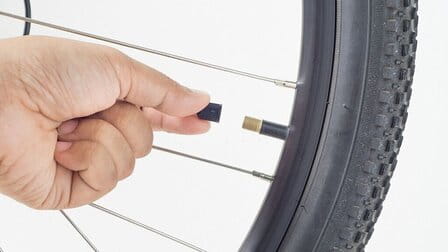A helmet is more than just a headwear accessory to protect cyclists from the sun and rain when riding a bike. Furthermore, high-quality helmets protect us from head injuries and impacts in the event of a collision. According to helmet safety statistics, wearing a helmet reduces the risk of brain injury by up to 70%.
As a result, a helmet should be an essential element of your bicycle kit. Cycling helmets have more benefits. This article will find out why cyclists need to wear helmets by those benefits of cycling helmets.
1. Benefits of Cycling Helmets

Since bike helmets were popular in the world, the number of people wearing them has skyrocketed. As a result, the number of head injuries in car accidents has dropped. More people are encouraged to ride their bikes now that they feel safer.
Protect Your Head
In general, the principal function of helmets is to protect the users when riding a motorcycle or bicycle. One of the leading causes of death and severe brain injury for cyclists in traffic accidents is head trauma. In addition to soft limb injuries, skull injuries are prevalent when people fall and can have significant repercussions later in life. As a result, head protection is significant and required.
According to the National Highway Traffic Safety Administration, Bicycle helmets are 70 per cent effective at reducing head and brain injuries. Every year, 900 people die in bicycle accidents, with 75 percent of them suffering brain injuries. Helmets are the only practical approach to lower the danger of severe brain injury or death due to this fact.
Wearing the proper helmet size protects both your head and brain, preventing both external and internal injury. This is especially crucial for children's bike safety because their brains are still developing.
Protect From Bad Weather

Another reason to wear a helmet is terrible weather. All of us don't want to ride in heavy rain, but the weather may be unpredictable even in the best of conditions. This is especially true when travelling across large distances.
If your bicycle is your primary mode of transportation and you travel by bike frequently, you may have to ride in severe weather. The benefits of cycling helmets, the helmet will shield you from weather threats such as direct sunlight, rain, and hail. A helmet, particularly one with a visor, can help protect you from rain, wind gusts, and the sun's UV rays. Some companies also sell winter helmets. If you're riding in cold weather, these will keep you toasty.
Increase Visibility
Cycling is fraught with dangers, one of which is vehicles. Many accidents occur as a result of drivers failing to see bikers. A bicycle helmet with luminous stripes or lights can increase your visibility to cars. This is very important at dawn or dusk, as well as when your vision is low. A brightly coloured helmet is also an intelligent choice for daytime visibility.
Moreover, when cycling long distances in less than ideal weather, such as rain, a helmet can improve your ability to see the road to be careful of other drivers on the road, as well as potential hazards, by keeping water out of the eyes. You need to wear a helmet when cycling. A helmet with a visor can also help block the sun, improving your vision by reducing the impact of direct sunlight on your eyes.
When choosing a cycling helmet, you might choose a bright colour. Or, add reflective tape to your helmet to help drivers see you when it's dark.
Protect your face & Keep your head warm

Not only protecting the cyclist's head, the helmet, cycling cap also helps protect most of the face in the event of a collision. Although facial injuries are not fatal, they can cause a lot of pain, disfigurement and cost money to treat.
Besides, If you're riding a bike in cold and windy weather, a bike helmet can keep your head warm and dry. As we know, cycling regularly is one of the most effective ways to reduce the risk of health problems associated with sedentary lifestyles. You will sweat and breathe more deeply. This will help you to boost your overall fitness. But in case your head is warm and dry. A cycling helmet helps you increase comfort and decrease some health's problems or hair problems such as headache, dandruff, lack of hygiene, causing unpleasant odours,…
2. How to wear a cycling helmet in the right way

Wearing a helmet may appear to be a straightforward task. Nevertheless, when wearing it, cyclists may also pay attention to a few factors so that the helmet can increase its benefits of cycling helmet:
The forehead's front is protected
Cyclists should put the helmet in the correct position to ensure that the front of the forehead is protected. Cycling helmets must have a snug fit while also ensuring the cyclist's comfort.
Another technique to check the proper position of the helmet: your eyes can see the edge of the helmet when looking up. The helmet's straps need to be even and should form a seamless "Y" shape just below the earlobe.
Choosing the fit helmet
When wearing the helmet, we are always sure it does not move from side to side or up and down. To see if your hat size fits, try putting it on and adjusting the screw-down ring on the back of your head. A hat that fits you has a head-hugging feel, does not sag when worn, and does not feel overly tight, stiff, or tight.
Cycling helmets must be worn at head level (not tilted back) and low on the brow. The helmet's bottom edge should be 1 to 2 fingers wider than the brows. The helmet straps must be snug to the head. A warped chin strap should leave just enough room for a finger to slip between the strap and the chin. When you open your mouth, you can feel the helmet pulling down on your head.
Adjusting helmet straps

To ensure the best use of the helmet, we need to adjust the straps for a snug fit. This adjustment ring has two dimensions: a slider for vertical adjustment and a twist lock. Here are step will help you understand the method of adjusting the headband:
- Step 1: Of course, we need to put your helmet on. The cyclin helmet should be balanced, with the front brim parallel, just above the eyebrows and covering the forehead. Then, we unlock the buckle.
- Step 2: On the left side, open the LockDown latch. One hand holds the buckle of the helmet. With one hand, adjust the LockDown latch-up or down so that the lock position is just below your earlobe. The rope needs to lie flat. Lock the LockDown latch.
- Step 3: On the right side, straighten the strap residue at the buckle back. Repeat the exact operation of adjusting the LockDown splitter as in step 2.
- Step 4: Hold the two ends of the buckle, pull them close and try to see if you put it back. We can feel it too tight or not. If so, drain a short further from the right snap end.
- Step 5: Once the fit is right, buckle the hat. Ensure the buckle is in the recess just above the throat and not at the top of the chin.
- Step 6: Make one final adjustment, making sure the buckle isn't too loose for it to slip off the chin. But not too tight, a reasonable distance is when you can quickly hook one finger into the strap.
Conclusion
Above are some of the benefits of a cycling helmet and how to wear it the right way. While helmets can not prevent brain injuries, they help us reduce brain injuries by up to 85%.
Helmets also lower the chance of serious physical injuries to your head, such as a skull fracture, as well as other structural damage that can occur with brain traumas. Hopefully, through gearinstant's article, you can see the importance of a bicycle helmet and choose the fitting helmet for you.













